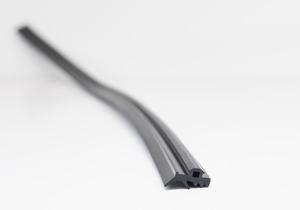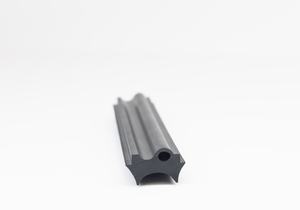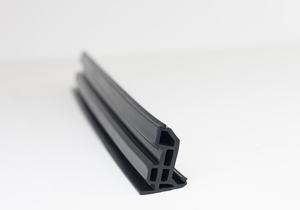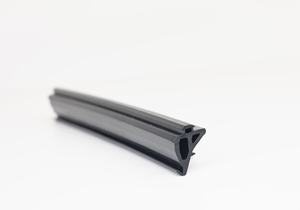Industrial seals are essential components used in various industrial applications to prevent leakage, contamination, and environmental intrusion in machinery, equipment, and infrastructure systems. These seals are designed to withstand high pressures, temperatures, and chemical exposures while maintaining reliable performance and operational efficiency. Here’s an extensive exploration of industrial seals, including their types, functions, materials, applications, and importance in industrial operations:
1. Types of Industrial Seals:
- O-Rings: O-rings are one of the most common types of industrial seals, consisting of a circular cross-section ring made from elastomeric materials such as rubber, silicone, or fluorocarbon. They are used to create a tight seal between mating surfaces in static or dynamic applications, including hydraulic systems, pneumatic systems, and automotive engines.
- Gaskets: Gaskets are flat seals used to create a barrier between two surfaces to prevent leakage of fluids or gases. They are commonly made from materials such as rubber, cork, paper, or metal and are used in applications such as pipe flanges, valves, pumps, and heat exchangers.
- Mechanical Seals: Mechanical seals are used to prevent leakage in rotating machinery such as pumps, compressors, and agitators. They consist of a stationary component and a rotating component that form a dynamic sealing interface, typically utilizing materials such as carbon, ceramic, and metal alloys.
- Lip Seals: Lip seals, also known as shaft seals or oil seals, are used to prevent the leakage of lubricants or contaminants in rotating shafts. They feature a flexible lip that seals against the shaft surface, typically made from elastomeric materials such as rubber or polyurethane.
- Expansion Joints: Expansion joints, also known as movement joints or bellows, are used to accommodate movement, thermal expansion, and vibration in piping systems, ductwork, and structural elements. They consist of flexible bellows or corrugated sections made from materials such as rubber, metal, or fabric.
2. Functions of Industrial Seals:
- Fluid Containment: The primary function of industrial seals is to prevent the leakage of fluids, including liquids, gases, and lubricants, from machinery, equipment, and systems. Seals maintain fluid containment to ensure proper operation, prevent contamination, and protect against environmental hazards.
- Environmental Protection: Industrial seals help protect equipment and infrastructure from environmental factors such as moisture, dust, dirt, chemicals, and corrosive agents. They create a barrier that prevents ingress and egress of contaminants, extending the lifespan of components and reducing maintenance requirements.
- Pressure and Temperature Management: Seals are designed to withstand high pressures, temperatures, and mechanical stresses encountered in industrial operations. They maintain sealing integrity under extreme conditions, preventing system failures, leaks, and safety hazards.
- Friction and Wear Reduction: Seals help reduce friction and wear between moving components in machinery and equipment, extending their service life and improving efficiency. Properly designed and maintained seals minimize energy consumption, noise generation, and mechanical losses.
3. Materials for Industrial Seals:
- Rubber: Rubber seals, including elastomers such as nitrile, EPDM, silicone, and fluorocarbon rubber, offer flexibility, resilience, and chemical resistance. Rubber seals are suitable for a wide range of applications and operating conditions, including hydraulic, pneumatic, and automotive systems.
- Plastics: Plastic seals, such as polytetrafluoroethylene (PTFE), polyurethane (PU), and polyethylene (PE), offer excellent chemical resistance, low friction, and dimensional stability. Plastic seals are used in applications where compatibility with aggressive fluids or elevated temperatures is required.
- Metals: Metal seals, including alloys such as stainless steel, carbon steel, and aluminum, provide high strength, durability, and resistance to corrosion. Metal seals are commonly used in high-pressure and high-temperature applications, such as valves, pumps, and heat exchangers.
- Composites: Composite seals combine the properties of multiple materials, such as rubber, fabric, and metal, to achieve specific performance requirements. Composite seals offer enhanced durability, flexibility, and sealing performance in demanding applications.
4. Applications of Industrial Seals:
- Hydraulic Systems: Industrial seals are used in hydraulic systems to prevent leakage of hydraulic fluid and maintain pressure and performance. Seals are found in hydraulic cylinders, pumps, valves, and actuators, ensuring reliable operation in construction equipment, industrial machinery, and mobile applications.
- Pneumatic Systems: Seals are employed in pneumatic systems to create airtight seals and prevent loss of compressed air. They are used in pneumatic cylinders, valves, fittings, and actuators, providing precise control and efficient operation in manufacturing, automation, and robotics.
- Automotive Industry: Industrial seals are essential components in automotive engines, transmissions, and drivetrain systems. O-rings, gaskets, and seals prevent leakage of oil, coolant, and other fluids, ensuring optimal performance, fuel efficiency, and reliability in vehicles.
- Oil and Gas Sector: Seals are used extensively in the oil and gas industry for sealing wellheads, valves, pumps, and pipelines. They withstand high pressures, temperatures, and corrosive environments, ensuring safety, environmental protection, and regulatory compliance in upstream and downstream operations.
- Process Industries: Industrial gaskets are employed in process industries such as chemical, petrochemical, and food processing to maintain containment, prevent contamination, and ensure product quality. Seals are used in pumps, mixers, reactors, and vessels, handling a wide range of fluids and materials.









